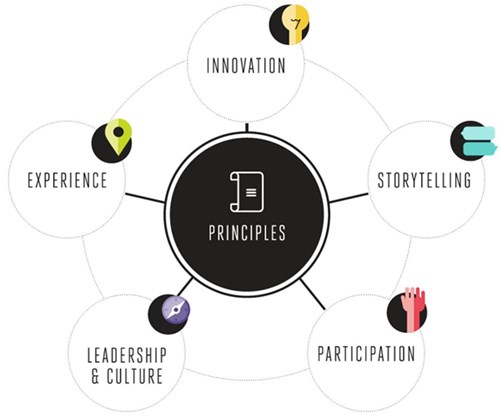- Customer Focus
6 Drivers of Brand Desire
Be authentic and unexpected – being predictable can kill your brand desire
Desire is the philosopher’s stone of brands. If companies can create true desirability for their brands, customers will not only be loyal, they will also act as brand champions. In his latest book, Brand Desire, ESADE Associate Professor Oriol Iglesias and his colleague Nicholas Ind from the Oslo School of Management reveal the 6 drivers that make people desire brands.
“Brand desire explains how companies can engage customers emotionally and create value for them,” says Iglesias. “Brand desire is a powerful motivating force that outstrips needs and wants and sometimes encourages people to go to surprising lengths to buy an object or experience.”
Based on academic research, in-depth interviews with top managers from leading global brands, and a tracking of nearly 1,000 product and service brands, the book demonstrates that desirable brands are about desirable experiences and shows what companies can do to maximize those experiences for their customers.
“Desire doesn’t just happen. Brands need to nurture it by offering both security and surprise,” says Iglesias.
Companies that want people to fall in love with their brands should use these 6 drivers to activate the feeling of brand desire in their customers:
1. Principles
Principles are enduring ideas that guide the organization and how things are done. Brands that consistently act on their principles are acknowledged as authentic by their customers. The most desirable brands are internally driven and externally aware, which enables them to reinterpret their principles over time.
“Principles can set an organization apart from others and make it distinctive, but they also need courageous leaders to sustain them,” states the author.
2. Participation
“Most of the brands we feature aim to be accessible to people. Some go even further and encourage the active participation of consumers. This makes people feel closer to the brand and helps ensure that the brand remains relevant and appealing,” says Iglesias.
In research conducted on customer participation, respondents were asked whether or not they saw a brand positively prior to their involvement in an online co-creation community: 62 per cent said they viewed the brand either positively or very positively. After community involvement, this figure increased to 84 per cent and the percentage of those with a very positive opinion moved from 19 to 30 per cent.
3. Leadership and culture
What really sets desirable brands apart is the capacity to breathe life into their principles. The principles must be understood, shared and lived by employees and made visible in the company’s interactions with customers.
“Only when employees understand and live the brand’s principles will a supportive organizational culture flourish,” says Iglesias. “The key challenge for managers is to trust and empower their employees to use their own judgement and behave in alignment with the brand’s principles.” The author warns, however, that this is not easy to do because many companies still have more traditional, authoritative styles that lower employee morale.

4. Storytelling
Stories are a powerful way to connect with the brand’s customers – they create high levels of brand interest and a feeling of authenticity.
“When customers engage with a story, they place themselves in it and it becomes meaningful. They see the world in new ways. Storytelling gives us both a rational and emotional reason to desire a brand,” says Iglesias. He also emphasizes that the most desirable brands invest heavily in “storybuilding” – a metanarrative that aligns all the storytelling activities around the brand’s identity and vision.
5. Experiences
The key to creating successful brand experiences is paying attention to detail, being consistent with the brand’s principles and engaging emotionally with customers, but without being predictable.
“The most memorable experiences are those that appeal to our senses and exude authenticity,” says Iglesias.
6. Innovation
If brands are to sustain desire, they need both continuity and surprise. “Brands need to be remarkable, and the only way to do that is by innovating and creating something completely new and unexpected,” the author argues.
“Consistency generates customer trust and confidence, and when combined with surprise, it generates desire.”
ESADE Business School, since its inception in 1958, is one of the world's most prestigious business schools, and has become a frame of reference in the world of executive training.
ARTICLES YOU MIGHT LIKE
VIEWPOINT
How HEC Paris designs executive programs on customer centricity
DEVELOPING LEADERS QUARTERLY MAGAZINE AND WEEKLY BRIEFING EMAILS

































